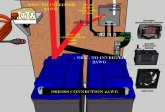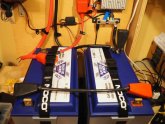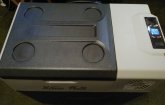Super excited to energize my first solar system, at least the heart of it. I hope you all can help me verify that everything looks right, is safe and make any necessary changes or additions. 100% open to any mistakes or criticisms or if something just looks dumb. I'm new here. 
Not much is fastened down in case I need to rearrange. To be clear, I'm spending the winter building the rack and array setup to go onto my truck. I'll basically be building the whole project, running/testing appliances, recharging (very few cycles) with AC and wiring/testing the whole system without an array, for now.
*24V PIP. (2) Battleborn 12V 100Ah.*
I hope to convert a bunch of appliances via Anderson connectors and Drok converters, so I opted for the split block with the 24V and 12V circuits separate. After any glaring corrections on the general overview, I'll kinda go section by section because I have questions! Battery, main connections area, fuse block and Drok, etc.
I have decent pictures of each area. Only one negative post with the shunt is connected on batteries.
I also made some quick drawings to sort through the mess. Hoping to fire it up this weekend. Any and all help is greatly appreciated! Gratitude to Will for hosting and all who contribute their time here.

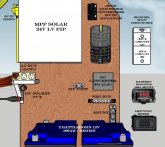


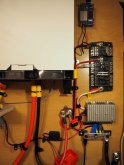
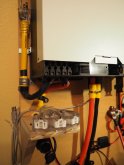
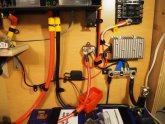
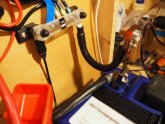
Not much is fastened down in case I need to rearrange. To be clear, I'm spending the winter building the rack and array setup to go onto my truck. I'll basically be building the whole project, running/testing appliances, recharging (very few cycles) with AC and wiring/testing the whole system without an array, for now.
*24V PIP. (2) Battleborn 12V 100Ah.*
I hope to convert a bunch of appliances via Anderson connectors and Drok converters, so I opted for the split block with the 24V and 12V circuits separate. After any glaring corrections on the general overview, I'll kinda go section by section because I have questions! Battery, main connections area, fuse block and Drok, etc.
I have decent pictures of each area. Only one negative post with the shunt is connected on batteries.
I also made some quick drawings to sort through the mess. Hoping to fire it up this weekend. Any and all help is greatly appreciated! Gratitude to Will for hosting and all who contribute their time here.











